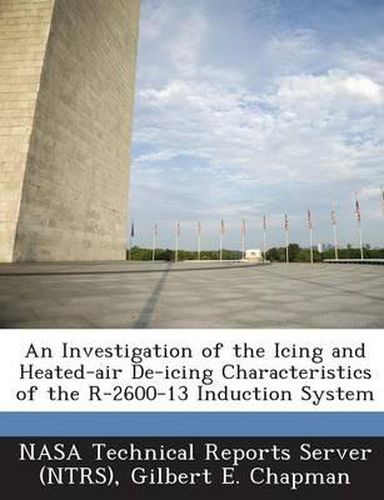Readings Newsletter
Become a Readings Member to make your shopping experience even easier.
Sign in or sign up for free!
You’re not far away from qualifying for FREE standard shipping within Australia
You’ve qualified for FREE standard shipping within Australia
The cart is loading…






A laboratory investigation was made on a Holley 1685-HB carburetor mounted on an R-2600-13 supercharger assembly to determine the icing characteristics and the heated-air de-icing requirements of this portion of the B-25D airplane induction system. Icing has been found to be most prevalent at relatively small throttle openings and, consequently, all runs were made at simulated 60-percent normal rated power condition. Icing characteristics were determined during a series of 15-minute runs over a range of inlet-air conditions. For the de-icing investigation severe impact ice was allowed to form in the induction system and the time required for the recovery of 95 percent of the maximum possible air flow at the original throttle setting was then determined for a range of wet-bulb temperatures. Results of these runs showed that ice on the walls of the carburetor adapter and on the rim of the impeller-shroud portion of the supercharger diffuser plate did not affect engine operation at 60-percent normal rated power. Ice that adversely affected the air flow and the fuel-air ratio was formed only on the central web of the carburetor and then only when the inlet air was saturated or contained free moisture in excess of saturation. No serious ice formations were observed at inlet-air temperatures above 66 0 F or with an inlet-air enthalpy greater than 34 Btu per pound. The maximum temperature at. which any trace of icing could be detected was 1110 F with a relative humidity of approximately 28 percent, The air-flow recovery time for emergency de-icing was 0.3 minute for.an enthalpy of 35 Btu per pound or wet-bulb temperature of 68 0 F. Further increase in enthalpy and wet-bulb temperature above these values resulted in very slight improvement in recovery time.
$9.00 standard shipping within Australia
FREE standard shipping within Australia for orders over $100.00
Express & International shipping calculated at checkout
A laboratory investigation was made on a Holley 1685-HB carburetor mounted on an R-2600-13 supercharger assembly to determine the icing characteristics and the heated-air de-icing requirements of this portion of the B-25D airplane induction system. Icing has been found to be most prevalent at relatively small throttle openings and, consequently, all runs were made at simulated 60-percent normal rated power condition. Icing characteristics were determined during a series of 15-minute runs over a range of inlet-air conditions. For the de-icing investigation severe impact ice was allowed to form in the induction system and the time required for the recovery of 95 percent of the maximum possible air flow at the original throttle setting was then determined for a range of wet-bulb temperatures. Results of these runs showed that ice on the walls of the carburetor adapter and on the rim of the impeller-shroud portion of the supercharger diffuser plate did not affect engine operation at 60-percent normal rated power. Ice that adversely affected the air flow and the fuel-air ratio was formed only on the central web of the carburetor and then only when the inlet air was saturated or contained free moisture in excess of saturation. No serious ice formations were observed at inlet-air temperatures above 66 0 F or with an inlet-air enthalpy greater than 34 Btu per pound. The maximum temperature at. which any trace of icing could be detected was 1110 F with a relative humidity of approximately 28 percent, The air-flow recovery time for emergency de-icing was 0.3 minute for.an enthalpy of 35 Btu per pound or wet-bulb temperature of 68 0 F. Further increase in enthalpy and wet-bulb temperature above these values resulted in very slight improvement in recovery time.